Paths
Intro
This is the latest in a series of articles I’m writing to describe the way I approach game design. The last installation was on “Ramps” – essentially a tool for scaling intensity over time. This article builds on the last one, so if you haven’t read it yet I’d recommend you do that first.
Previous Article | Next Article
This installation is going to be on a concept I call “Paths.” I’m going to need this concept to explain something else further down the line, so I wanted to outline it now. I’m planning on fleshing the concept out a bit more when I return to it later.
Path: One or more Ramps comprising a connection between multiple parts of your game. For example, I often talk about the “Critical Path” – the simplest collection of Ramps and Nodes that connects the beginning of a game to the end (if the game has such a thing).
A Path can be very small or very large, depending on how you apply the concept. It can refer to small part of a single level of your game or it could refer to a huge web of ramps spanning the far extents of your game.
Note how the Paths contain both Ramps and the “hub areas” before and after.
Common Path Types
This list is not comprehensive, but the three types of Paths I outline below make up what I see in maybe 80% of all games out there, so I wanted to bring them up. They are:
- Linear
- Forked
- Spiderweb
Note how the Paths contain both Ramps and the “hub areas” before and after.
Linear
Linear Paths are one contiguous series of Ramps and areas (perhaps with small offshoots for non-Critical Path bonuses). One Ramp leads to another until the level is done.
Note that many linear Paths (like the one in the diagram above) have short offshoots for rewards, secrets, sub-missions, or optional objectives, but those almost always return to a hub back on the linear Path after a short time.
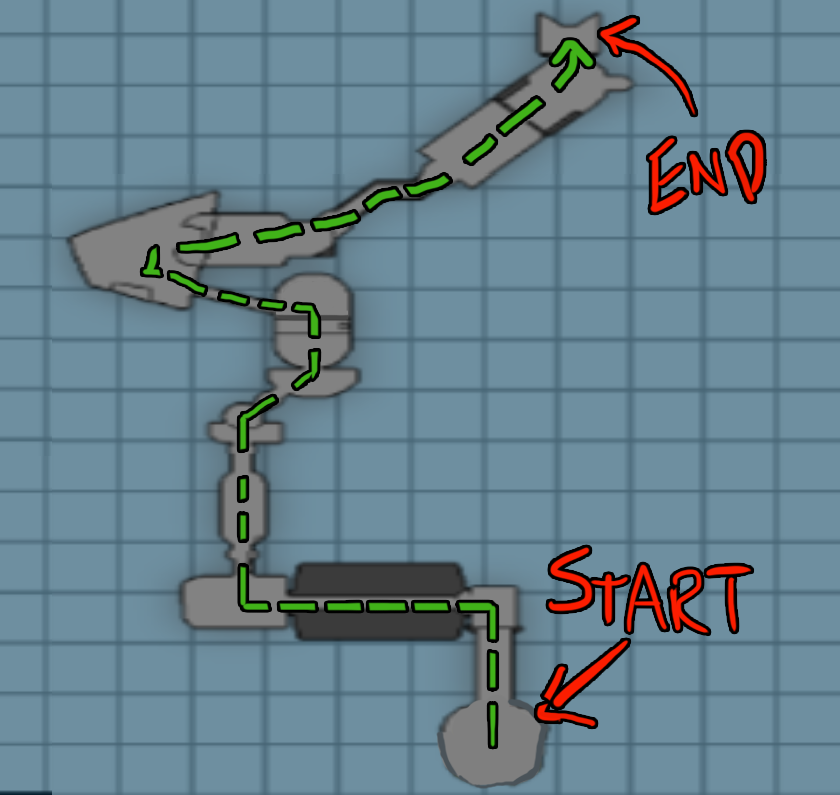
The above image is a map of the first level in Ratchet and Clank: Going Commando, The Flying Lab on planet Aranos. The player starts at the bottom of the map and has to get to the top. Note how the areas connect together in a linear fashion.
Forked
Two or more Linear Paths joined by a “hub” area.
This is the second level of the same game (Ratchet and Clank: Going Commando), and this level has a forked Path structure.
The player starts at the orange star and has a choice of two Paths to go down (A and B). Each loops back to the start hub when it is done, and each one is linear.
Path C is grafted onto the end of Path B, and when you finish it you can shortcut back to the hub area.
Spiderwebs
A spiderweb contains many forked Paths and many hub areas all joined together. This wasn’t a structure we used much in the Ratchet and Clank series – you tend to see it more in games like Skyrim, Fallout, or the Deus Ex franchise. Players are allowed a number of possible solutions to many problems they encounter. Because of its complexity compared to the other two, I don’t have a good way of visually representing this, so let me give you an example.
In the Deus Ex franchise, for example, there are often three or more ways to solve a problem:
- Combat
- You versus enemies
- Stealth/Hacking
- Avoid and find shortcuts
- Special ability (super-jump, punch through walls, etc)
- The player has many context-sensitive abilities such as punching through walls. Often problems will allow the use of one of these abilities as a solution.
Each of these Paths through a challenge involve separate Ramps.
For example, there’s a mission in Deus Ex 1 where the player needs to get into a building. The player can go in through the front door, but then the only option is a bloody fight with the guards.
As another option, the player can find a secret passage by hacking a soda machine found in a different part of the level and get in that way without having to fight.
As a third option, if the player has purchased enough ranks in the super strength augmentation, the player can lift some heavy boxes blocking a back-way into the building and thus either avoid combat or get the ability to sneak up behind patrols you otherwise couldn’t sneak past.
Next Time
In the next article, we’ll take a step back and consider what I think are the three major aspects of a game. In subsequent articles, I’ll talk about how I try to consider those three important aspects (Trinity) at every level of design.
Patreon Credits
As always, these articles wouldn’t be possible without my supporters on Patreon: (http://www.patreon.com/mikedodgerstout):
Champions
Petrov Neutrino
Guardians
Aidan Price
Martin Ka’ai Cluney
Patrons
François Rizzo
Ryan Auld
Genevieve Pratt
Jesse Pattinson
Nikhil Suresh
Teal Bald
Vincent Baker
Benefactors
Justin Keverne
Ben Strickland
Mad Jack McMad
Oliver Linton
Katie Streifel
Annie Mitsoda
Supporters
Margaret Spiller
Jason VandenBerghe
The Yuanxian
Backers
Kim Acuff Pittman
Karl Kovaciny
Joel S.
Neal Laurenza
Christopher Parsons
David Weis
Matt Juskelis
Mary Stout
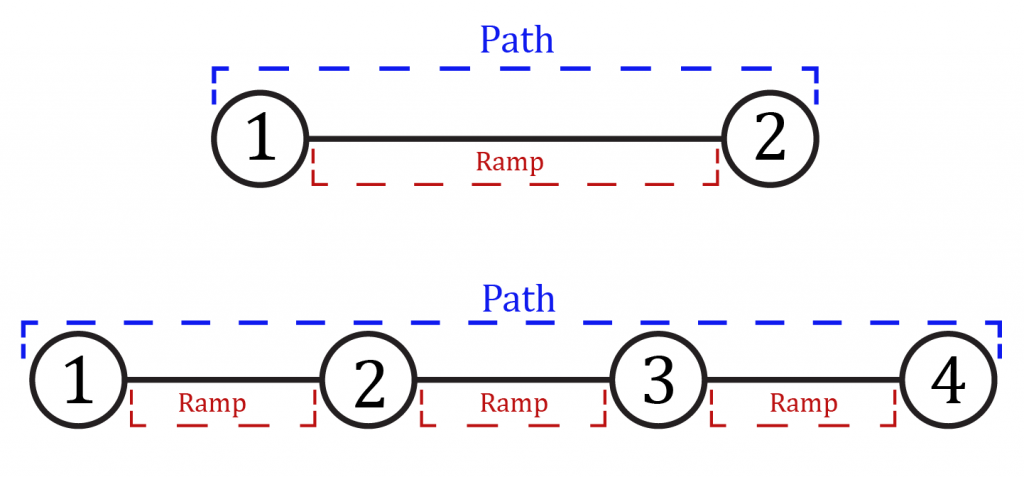
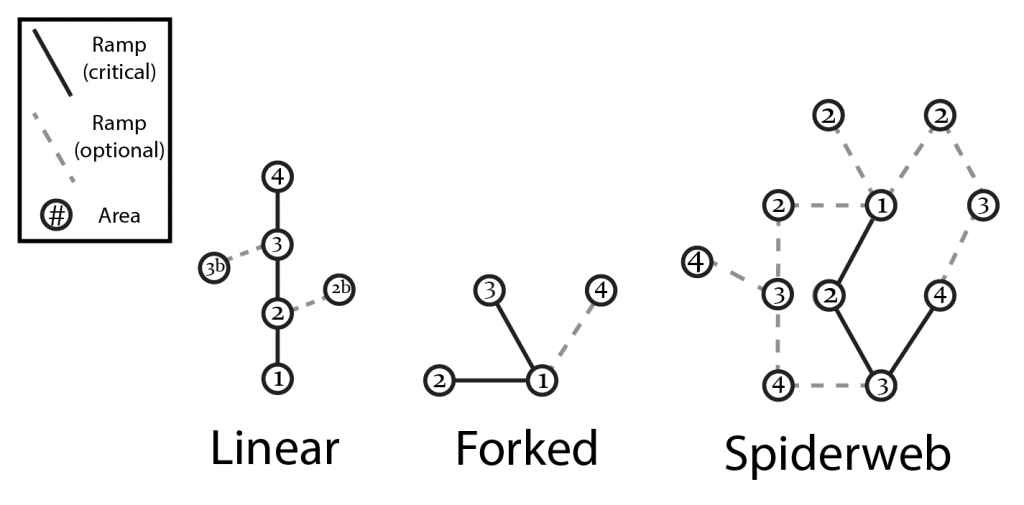
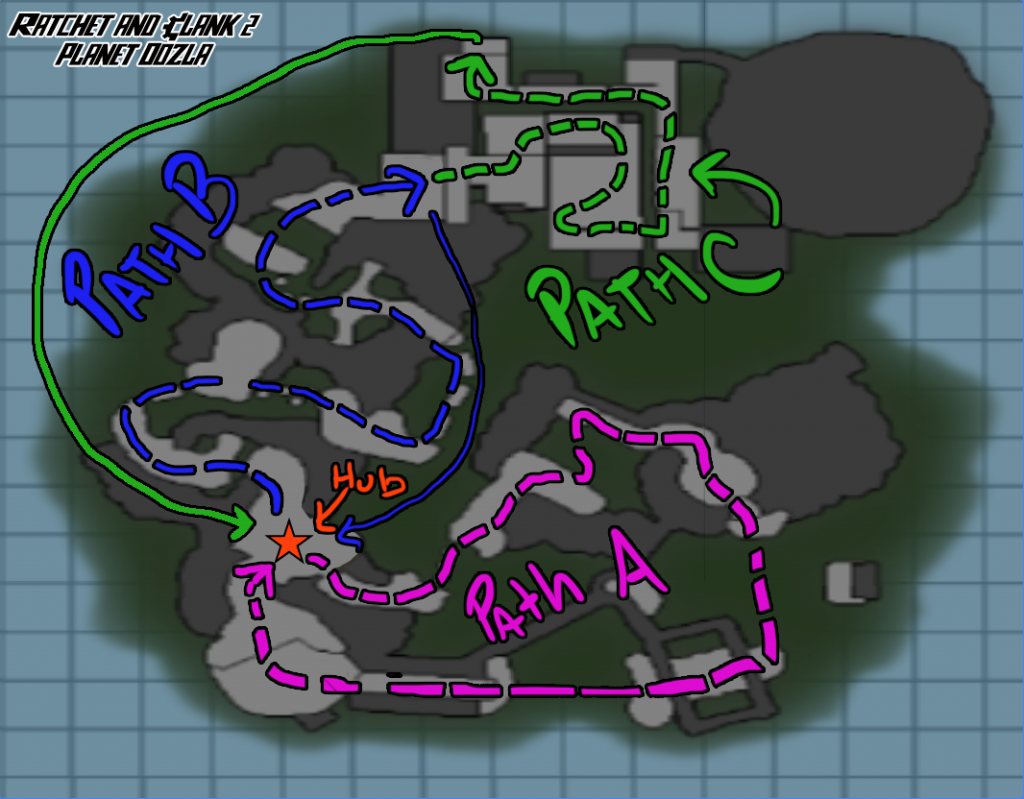
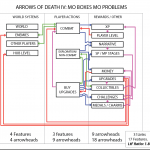


Leave a Reply
You must be logged in to post a comment.